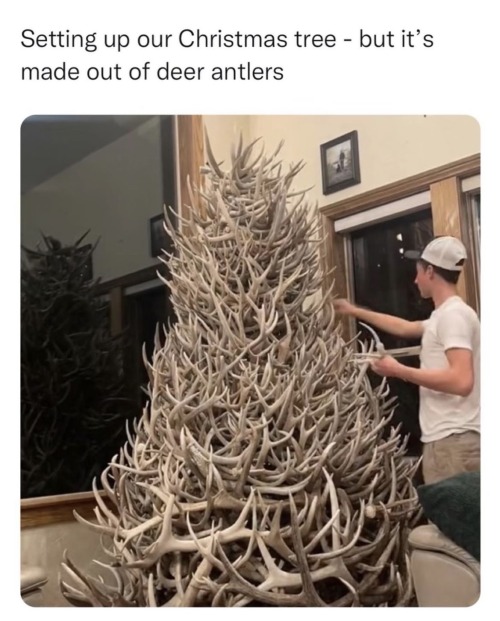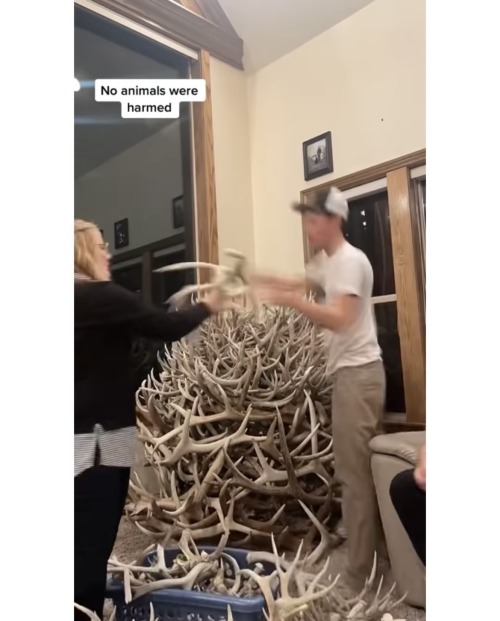The Reduction Gears And Steam Turbines Under Construction At The General Electric Plant, Circa March



The reduction gears and steam turbines under construction at the General Electric Plant, circa March 1942.

There are four sets of double reduction cross-compound geared turbines, with each turbine set driving a single shaft. “They offered almost 10-1 reduction to allow the turbines to run at much higher and more efficient rpm. These are some of the most critical components of the powerplant and one of the things which allowed long ranges in US battleships.“



Due to the date and the fact USS Iowa (BB-61) and USS Missouri (BB-63) were the only Iowa Class Battleships to receive General Electric gears and turbines, these are most likely for USS Missouri.


A man is shown deburring the edges of teeth with a file.
Note that they are double helix which eliminates axial thrust while providing the quieter running and increased strength of helically cut gears.
Photographed by Dmitri Kessel of LIFE Magazine. Identify by Peter Deforest.
LIFE Magazine Archive: 121941, 121944, 121942, 121943, 121940, 121945, 121946, 121949
More Posts from Enbylvania65000 and Others
my quality of life has improved tenfold ever since i was introduced to breezewiki, a site that exists solely to remove the bloat from fandom.com wikis. no more ads, quizzes, random autoplaying videos, popups, recommended pages from other sites, or discord server member lists. just the wiki. these things are finally readable again

Here is a comic I got the chance to create for the French Foundation For Medical Research. I feel incredibly honoured and proud to help the research.
Liens : Version française / Dons + en lire plus (FR)
That rabbit/hare post is messing me up. I’d thought they were synonyms. Their development and social behavior are all different. They can’t even interbreed. They don’t have the same number of chromosomes. Dogs, wolves, jackals, and coyotes can mate with each other and have fertile offspring but rabbits and hares cant even make infertile ones bc they just die in the womb. Wack.




Regardless of what you think of this tree… this comment was my favourite out of the collection of people who didn’t know deer shed their antlers every spring
I think something that is at the top of my of list for things that frustrate and upset it about all of this how Jewish victimhood is talked about and treated in non-Jewish spaces.
There is this very nasty and insidious way that Jewish victimhood gets talked about in both Left and Right spaces. And it categorized and spoken about as victimhood and "victimhood"
Where as in Jewish spaces is treated and spoken as Jewish survival and Jewish trauma. One that we more and more recognizing that we don't fully understand the full scope of said trauma and a trauma we know we have never had a chance to fully work through because of the many traumas that been built over each other.
We are fully aware we have not worked through our trauma from the Holocaust and we know that we never gotten a chance to work multiple other traumas.
We also know that we will never get anything close being able to have something like restorative justice because that involves the offenders participating and taking responsibility and that just doesn't happen.
Rather the Left and the Right claim that we like to be "perpetual victims" as a get out of jail free card and/or to score brownie points.
Just ask consistently online Jewish person if the have heard "eternal Jewish victimhood" "perpetual victims" "always a victims" etc and they will ask you which side's comments are looking for, the Right or the Left because they've got for both.
This sadly has only gotten worse after Oct. 7
The Middle Rodentocene: 10 million years post-establishment

Better Ungulate than Never: The Hamtelopes
A small, but abundant and diverse herbivore common across the land during the Middle Rodentocene are the hamtelopes (family Cervimuridae), which are found on most of the continents by this point in the planet's history. Looking a fair bit like small ungulates, hamtelopes are browsers, feeding on higher vegetation such as bushes and shrubs, and thus avoid competition with grazing cavybaras when the two coexist on the same turf.
Among the many species of hamtelopes, the most remarkable is the Rusty Hamtelope (Erythrocervimys bambini), which is unmistakable due to its distinctive reddish-orange hue of its coat. On Earth, such a color for a forest-floor browser would be highly disavadvantageous, sticking the animal out into plain sight and leaving it vulnerable and visible to predators.
However, HP-02017 is distinguished by the presence of a second minor sun, Beta, that orbits further out from the main sun Alpha and for a large portion of the year is opposite the main star, making Beta appear by night and illuminate the landscape in a phenomenon called "Beta-twilight". Beta-twilight is when the rusty hamtelope is at its most active, as well as dawn and dusk: and in the fiery glows of sunrise and sunset, or the red-orange Beta-twilight landscape, the rusty hamtelope demonstrates that Earthly life can adapt even in conditions not normally found in Earth, camouflaging perfectly in the forest floor while the forest is bathed in a faint, scarlet hue.

But as remarkable as the rusty hamtelope is, the clade of hamtelopes is not merely limited to this one genus. Hamtelopes have reached peak diversity in the Middle Rodentocene, spanning several genera and dozens of species. Some, such as the long-legged ratzelles (Cervicricetus spp.) are daytime grazers of the forest floor, and indeed even share habitat with the rusty hamtelope by different times of activity to minimize competition. Others, such as the ramsters (Capramys spp.) are more at home in the alpine tundras and high plateaus, leaving a lifestyle akin to that of mountain goats, agile and surefooted as they climb up steep cliffs to graze on mountainside vegetation.
But by far the most unusual members are the toponies (Microhippoides spp.) which are plains-dwellers resembling tiny, tailless equids. What makes them particularly odd is how small they are, compared to the other genera: this in fact is due to competition with larger, bipedal hopping jerryboas that have usurped their niche out in the open plains. Able to travel longer distances with their more energy-efficient bounding gait and defend themselves from predation with sharp hind-limb claws, the jerryboas very quickly dominated the open grassland and savannah, leaving only the niche of small grazer vacant for the toponies.
As new lineages emerge and diversify in the Middle Rodentocene, their more divergent forms begin to clash with one another in ecological terms. In the end, some families will dominate, others will barely hang on and others will completely die out, as hamster diversity climaxes in the Rodentocene's halfway mark.
▪▪▪▪▪▪▪▪▪▪
I never expected a webcomic artist who writes about peace and love for everyone and the importance of standing up for LGBT rights everywhere would link to a site that calls for the end of Israel's existence and a Jewish group that repeatedly uses undeniably antisemitic imagery in their attacks on Israel as well as homophobia.
So far unfollowed two people over the war in Israel and Palestine. Thought that after the last conflict I had already sorted out who not to follow. At least none of them are mutuals, but one of them is a conlanger and linguist I've admired for so many years whose insights on PIE reconstruction have been of great interest to me.
-
 amberrockstar reblogged this · 2 weeks ago
amberrockstar reblogged this · 2 weeks ago -
 amberrockstar liked this · 2 weeks ago
amberrockstar liked this · 2 weeks ago -
 hbbisenieks reblogged this · 2 weeks ago
hbbisenieks reblogged this · 2 weeks ago -
 farmageddonlove reblogged this · 1 month ago
farmageddonlove reblogged this · 1 month ago -
 cakeandpi liked this · 1 month ago
cakeandpi liked this · 1 month ago -
 interclouds reblogged this · 1 month ago
interclouds reblogged this · 1 month ago -
 rockscanfly reblogged this · 1 month ago
rockscanfly reblogged this · 1 month ago -
 rockscanfly liked this · 1 month ago
rockscanfly liked this · 1 month ago -
 wolfina-darkmoon liked this · 2 months ago
wolfina-darkmoon liked this · 2 months ago -
 photosynthefish-12 liked this · 2 months ago
photosynthefish-12 liked this · 2 months ago -
 hbbisenieks liked this · 2 months ago
hbbisenieks liked this · 2 months ago -
 legowerewolf reblogged this · 2 months ago
legowerewolf reblogged this · 2 months ago -
 legowerewolf liked this · 2 months ago
legowerewolf liked this · 2 months ago -
 copper-and-smoke reblogged this · 2 months ago
copper-and-smoke reblogged this · 2 months ago -
 copper-and-smoke liked this · 2 months ago
copper-and-smoke liked this · 2 months ago -
 stratobomber75 reblogged this · 1 year ago
stratobomber75 reblogged this · 1 year ago -
 imperialinquisition reblogged this · 1 year ago
imperialinquisition reblogged this · 1 year ago -
 imperialinquisition liked this · 1 year ago
imperialinquisition liked this · 1 year ago -
 goldfox95 liked this · 1 year ago
goldfox95 liked this · 1 year ago -
 eisbar777 reblogged this · 1 year ago
eisbar777 reblogged this · 1 year ago -
 keylinc liked this · 1 year ago
keylinc liked this · 1 year ago -
 trainer0084 liked this · 1 year ago
trainer0084 liked this · 1 year ago -
 animal-like liked this · 1 year ago
animal-like liked this · 1 year ago -
 land79starz liked this · 1 year ago
land79starz liked this · 1 year ago -
 shumner reblogged this · 1 year ago
shumner reblogged this · 1 year ago -
 hg807 liked this · 1 year ago
hg807 liked this · 1 year ago -
 alpha-sky-blade reblogged this · 1 year ago
alpha-sky-blade reblogged this · 1 year ago -
 theravensperch reblogged this · 1 year ago
theravensperch reblogged this · 1 year ago -
 theravensperch liked this · 1 year ago
theravensperch liked this · 1 year ago -
 naresar reblogged this · 1 year ago
naresar reblogged this · 1 year ago -
 pixelexplorer reblogged this · 1 year ago
pixelexplorer reblogged this · 1 year ago -
 cyberflux liked this · 1 year ago
cyberflux liked this · 1 year ago -
 sir-orca reblogged this · 1 year ago
sir-orca reblogged this · 1 year ago -
 sir-orca liked this · 1 year ago
sir-orca liked this · 1 year ago -
 jtmusson liked this · 1 year ago
jtmusson liked this · 1 year ago -
 phubarnow liked this · 1 year ago
phubarnow liked this · 1 year ago -
 toyguyuniverse reblogged this · 1 year ago
toyguyuniverse reblogged this · 1 year ago -
 toyguyuniverse liked this · 1 year ago
toyguyuniverse liked this · 1 year ago -
 snickeringmacs reblogged this · 1 year ago
snickeringmacs reblogged this · 1 year ago -
 ostwind reblogged this · 1 year ago
ostwind reblogged this · 1 year ago -
 ostwind liked this · 1 year ago
ostwind liked this · 1 year ago -
 stgcsjlw08 liked this · 1 year ago
stgcsjlw08 liked this · 1 year ago -
 narihira8 liked this · 1 year ago
narihira8 liked this · 1 year ago -
 man-i-dont-know liked this · 1 year ago
man-i-dont-know liked this · 1 year ago -
 bearlyheresblog liked this · 1 year ago
bearlyheresblog liked this · 1 year ago -
 jahblanc liked this · 1 year ago
jahblanc liked this · 1 year ago -
 kchill422 liked this · 1 year ago
kchill422 liked this · 1 year ago





